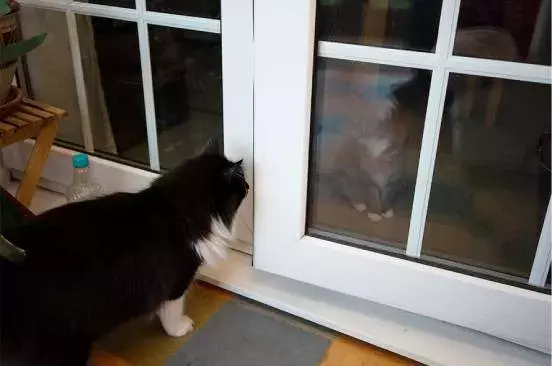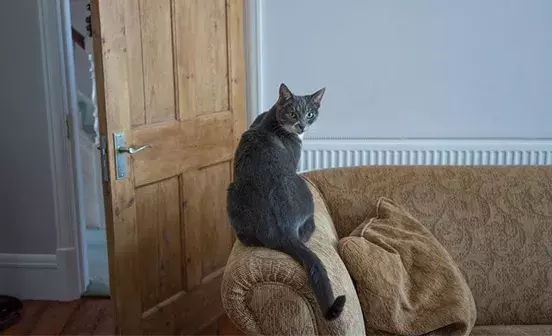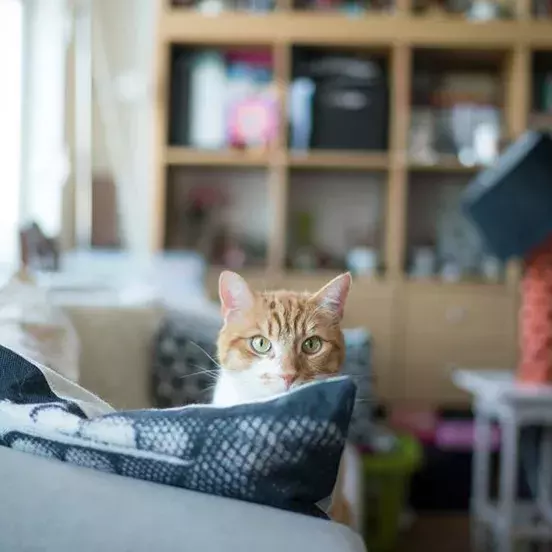If you have more than one cat it can be very distressing when your cats fight, but it’s not that unusual for them to fall out from time to time.
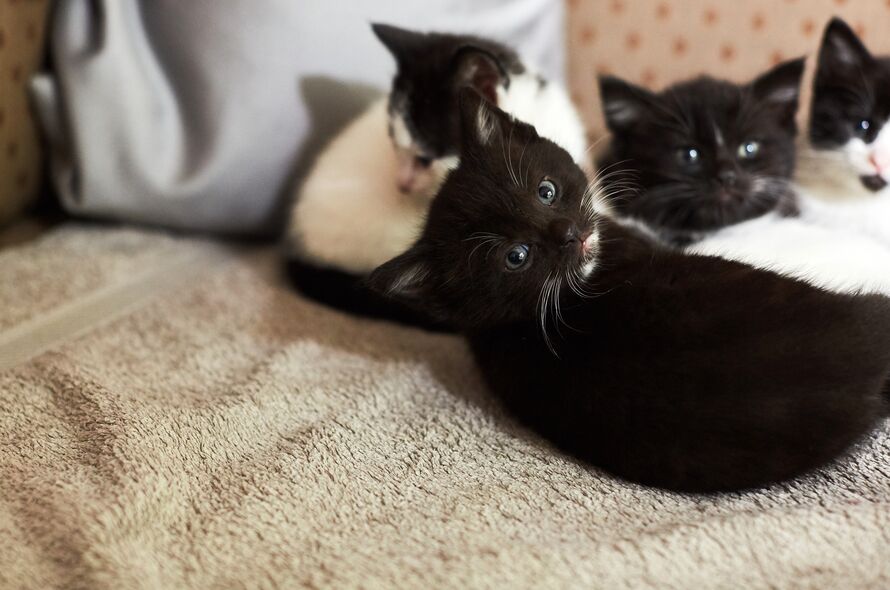
Pet cats have evolved from a largely independent species that likes to be alone so they’re unlikely to live together in perfect harmony all the time. However, the issue can come when the fighting becomes serious, or carries on for a long period of time.
How Can I Tell If My Cats' Fighting Is Serious?
Many cats will enjoy play fighting and will chase each other, roll around and bat each other with their paws.
The key difference between play fighting and real fighting with cats is noise. Play fighting is usually silent, with plenty of pauses as each cat repositions themselves. Any biting is gentle and doesn’t cause injury or pain and claws are usually retracted.
Play fighting can, on occasions, escalate and if your cats start hissing or screeching this may indicate that one of them is getting a little too rough.
When play fighting, both cats will also go back to normal afterwards with no obvious tension between them.
If your cats are fighting every time they see each other for example, this is an obvious issue, but some other signs of real fighting might be harder to spot.
If cats are fighting or are tense around each other this can be very distressing. Distressed cats might develop physical symptoms such as bladder problems, or behavioural ones like going to the toilet in the house. It’s not always easy to tell if your cat is distressed as they are very good at hiding their feelings, so it’s always best to keep a close eye out for any changes in behaviour and seek advice from your vet.
Signs That Cats' Fighting Is Real
There are a few different signs that your cats are fighting or not getting along:
- Full-contact fighting where both cats are locked together. They might fight like this every time they see each other, potentially causing injuries, or they might sometimes be fine together but only when supervised.
- Partial-contact fighting. This is where the cats flail their paws rapidly in the direction of the other cat, with or without actual contact.
- Body language that looks aggressive. One cat might stalk the other cat, with tense body posture that is low to the ground. Their ears will be rotated backwards, and their back may be arched and their tail fluffed up.
- Aggressive sounds. These are usually hissing, growling, more guttural sounds (yowling) or a scream (screeching).
There are less obvious signs that are referred to as passive or silent aggression. Less obvious signs your cats aren’t getting along might be:
- Your cats staring at each other with wide, unblinking eyes and a fixed expression.
- One cat ‘stealing’ a resting place from the other cat (e.g. one cat climbs over the other and attempts to rest in the same place in such a way that the cat that was there originally is forced to leave).
- One cat blocking passageways, stairs and corridors to prevent the other cat moving freely throughout your home.
Blocking access to the cat flap or litter tray.
If you notice any of these behaviours, you should contact your vet. It may also be worth asking them about a referral to a cat behaviourist who should be able to help with your situation.
Why Are My Cats Fighting?
Your cats might fight for a few different reasons. For example, if one cat has just come from a stay at somewhere like the vet, which may have a distinctive smell, they will smell unfamiliar and possibly a bit scary to your other cats.
Cats communicate predominantly using their sense of smell, and groups of cats create a familiar communal scent that helps to bond them. If one cat comes back smelling unfamiliar this can unsettle other cats in the house. To try and avoid this kind of fighting, it can be a good idea to keep the returning cat in a separate room for a few hours, or overnight when you bring them home to allow them to groom and re-establish the familiar scent.
Sometimes aggressive behaviour can be nothing to do with your other cat. The instinct to fight could be triggered by something completely separate, like seeing another cat through the window, at which point one of your cats might mistakenly “attack” the closest cat to them.
This can damage the relationship between cats who live together, so if separating them for a period of 24-48 hours doesn’t solve things it’s a good idea to ask your vet for advice and potentially look to work with a cat behaviourist.
My Cats Have Suddenly Started Fighting
If your cats have suddenly started fighting, the safest option is to separate them into different rooms for 24-48 hours until they have both calmed down. You should also keep them inside for this time in order to avoid them meeting and fighting outside. Keep an eye out for any signs that your cats are frustrated by being kept inside, such as pacing, meowing to be let out, or raising themselves up by the door.
Make sure your cats are kept separate for long enough that they can calm down, but not so long that they become frustrated and potentially more stressed. If you think either of them might be injured, get in touch with your vet as soon as possible.
It is safest to separate two cats who are fighting using a thick blanket or by gently pushing a soft bristled broom between them. Don’t try to pick them up with your bare hands as you might get hurt by accident.
If you are able to separate them into different parts of the house make sure they both have easy access to food, water, a place to sleep, somewhere to hide, a scratching post and a litter tray.
Once they’ve both had time to cool off, re-introducing them may be as simple as opening the doors and allowing them to meet again. However, if the fighting resumes when they see each other, you might need to keep them apart for a while longer and essentially treat them as complete strangers meeting for the first time.
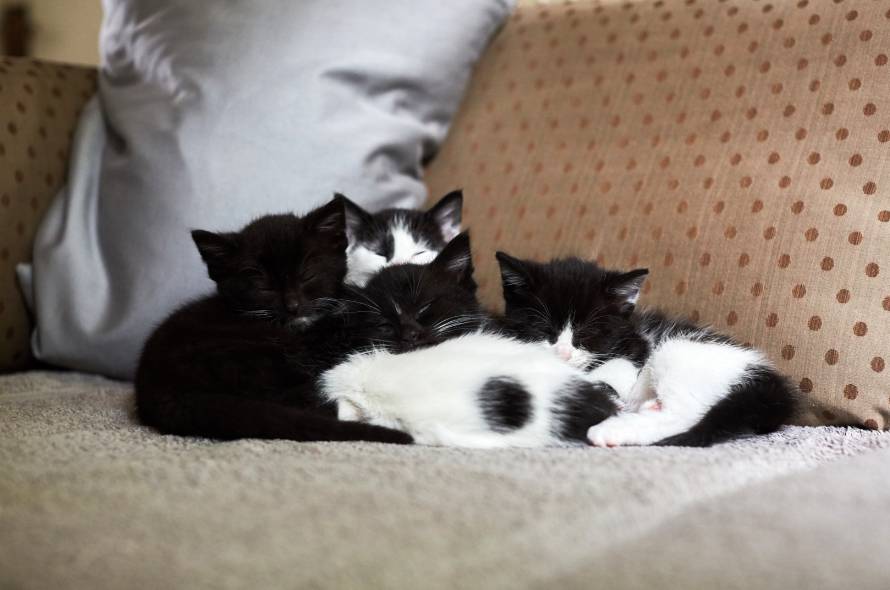
How Can I Help My Cats Get Along?
As cats are territorial, they instinctively feel they need to defend an area where they have all the things they need to survive.
For your cats this would be your home and the various places within it, for example where they come in and go out, eat, drink, sleep, play, scratch, hide and go to the toilet. It will also include the areas that they use to go from one place to another like your stairs, hallways, etc.
If you have two or more cats then each, in theory, needs to feel that they are not directly competing for all these important things. You can help by ensuring that all their ‘resources’ are provided in the right places and in sufficient numbers for your cats not to feel they need to fight for anything that is in short supply. You may wish to provide each cat with one of everything (plus one extra so there is always one spare) so that every cat feels they have a choice. If you position these ‘resources’ away from each other then it gives your cats plenty of opportunities to find them in any part of the home.
To help limit your cats competing for resources, you can:
- Provide dry food for ‘grazing’ throughout the day or divide wet food into several smaller meals to avoid competition at set mealtimes. Have several different feeding station areas around the home to avoid conflict and make sure all your cats can eat alone if they would like.
- Position food and water bowls to make sure your cats use them facing in any direction, i.e. leaving sufficient space between the bowl and the wall.
- Place water bowls throughout the home, located away from food.
- Make sure all cats have plenty of options for high resting places (e.g. on top of cupboards), beds and hiding places (e.g. under beds or in wardrobes).
- Provide scratching posts near entrances, beds and feeding bowls so that your cats can make territorial marks with their claws in important places. For more information see our advice sheet: My cat’s scratching the furniture – what should I do?
- Provide indoor litter trays (1 litter tray per cat + 1 extra in different locations) even if your cats have access outside, just in case one cat is being blocked from leaving the house by another. For more information, refer to advice sheet: A guide to litter trays and toileting.
- Provide two separate entry and exit points to your home if you can, i.e. cat flaps, doors or windows, to avoid the risk of blocking.
Will I Have To Rehome One Of My Cats?
You won’t necessarily have to rehome any of your cats, but you will have to make some changes in order to help them. There are lots of options you can try in order to fix the problem and working with a cat behaviourist can often help find a solution.
Sometimes though, it can be the case that rehoming is the best option. Some cats just don’t like living with other cats, and therefore separating them can be the best solution for them, no matter what loving owners are prepared to do to fix the problem.
If rehoming is the best outcome, a behaviourist will be able to provide you with support. Having an understanding of your cat’s behaviour, likes and dislikes will also mean that a rehoming centre such as Battersea will be able to find them a great home that suits their needs.
If cats are fighting or are tense around each other this can be very distressing. Distressed cats might develop physical symptoms such as bladder problems, or behavioural ones like going to the toilet in the house. It’s not always easy to tell if your cat is distressed as they are very good at hiding their feelings, so it’s always best to keep a close eye out for any changes in behaviour and seek advice from your vet.
